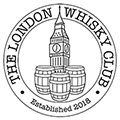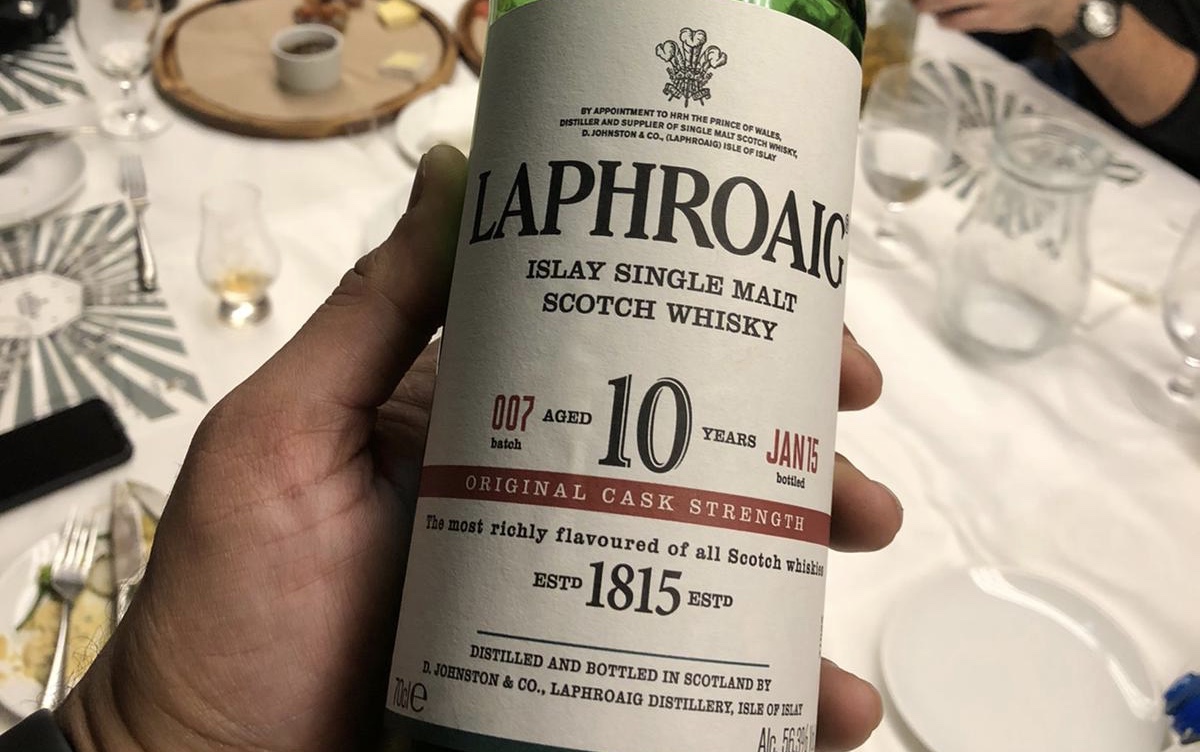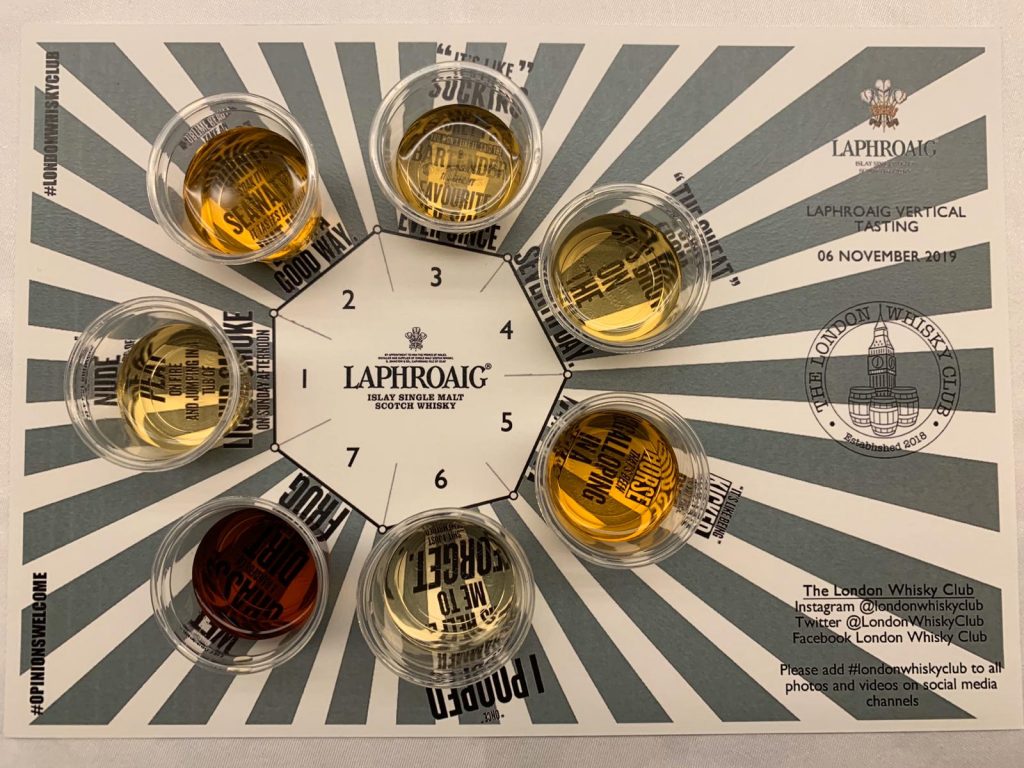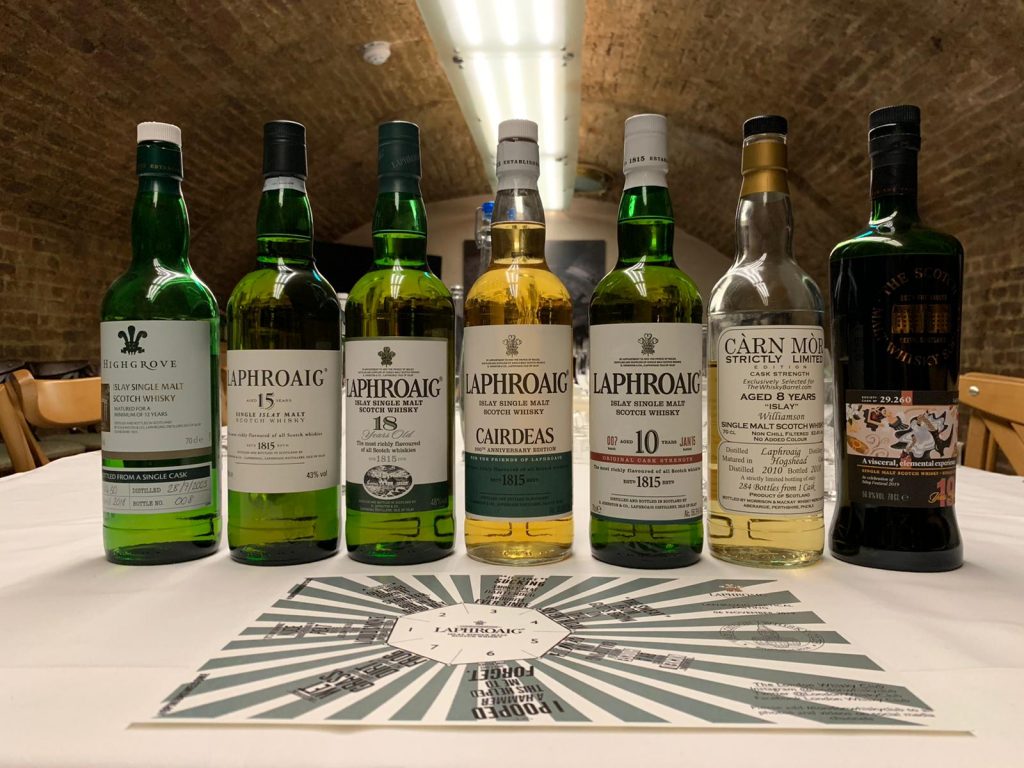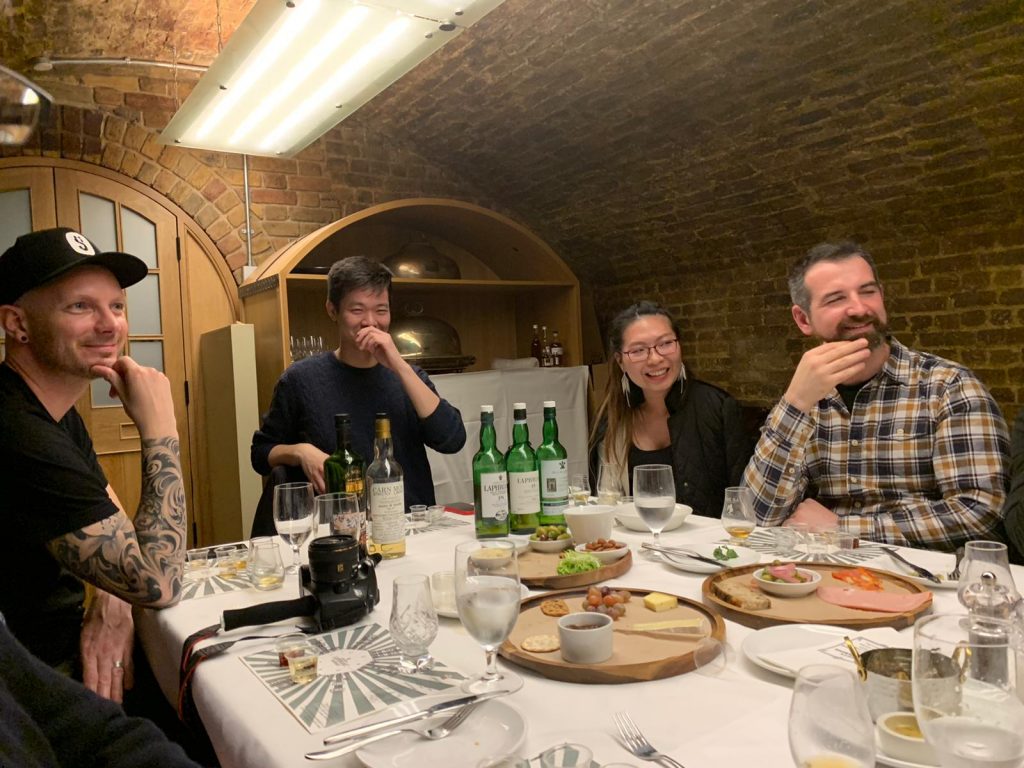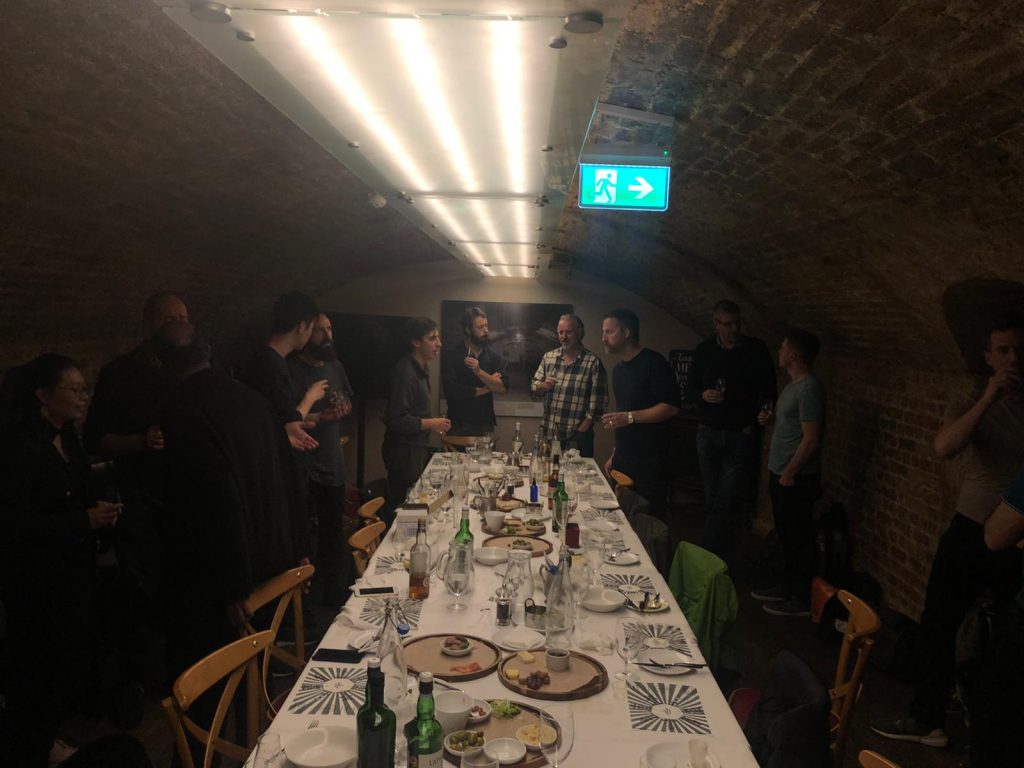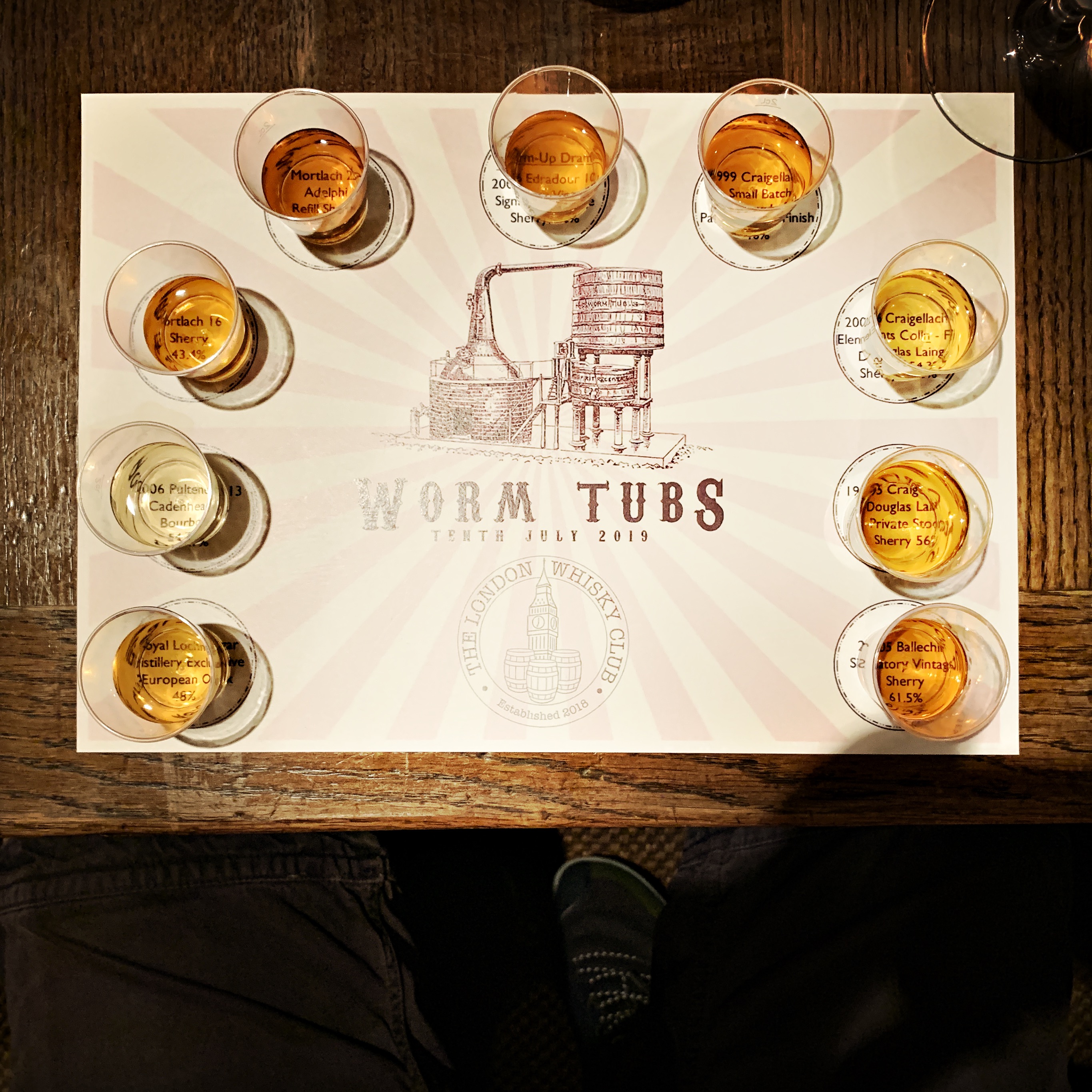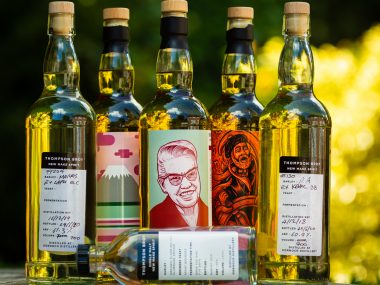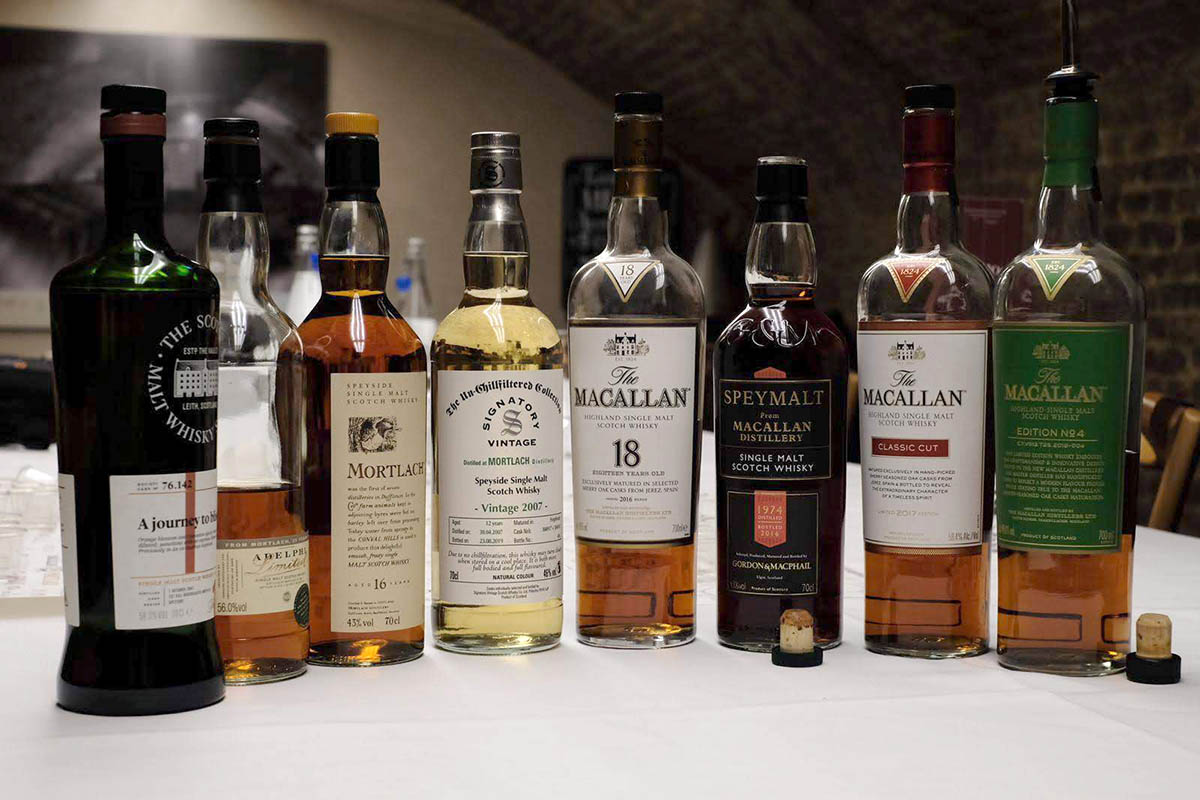With many hours of darkness and a definite chill in the air, November was calling for something to warm the cockles. There are lots of options when it comes to heavily peat influenced scotch, and all have their own characteristics and idiosyncrasies. Islay is the classic place to start with the big Kildalton bruisers on the south coast. You could head further north on the island and explore the often overlooked treasures of Caol Ila, go west for some artisan product from Kilchoman or stay central and take a risk with Bowmore. Of course you could venture off the island and enjoy some of the other west coast options or go a bit left field and partake in some peated Speysiders. All have good reasons to be chosen for a peated tasting. However this particular tasting was one I’d wanted the club to do for a little while and has a personal element for me. Laphroaig 10 was the first malt whisky I ever drunk. Although I struggled with it at first, over time, the more I became familiar with the peated profile, the more I began to fall in love with it. It led the way for me and allowed me, later in life, to take further steps down the rabbit hole that is whisky. It’s not just me that has a connection with Laphroaig, one of our longer serving members Toby G also has a historic relationship with the brand and very much helped put the tasting together. This is a distillery that divides opinion, both in flavour profile and current corporate strategy. I’ll be the first to admit that there are some below par bottles out-there. However, there are also some absolute corkers and we assembled a group of them for our tasting on November 6th.
The distillery itself is relatively old, founded in the early 19th Century. It sits in between Port Ellen and Lagavulin and describes itself as “The most richly flavoured of all Scotch whisky”. Whether or not that still rings true is up for debate, what certainly is true is that it produces a heavily phenolic style of whisky, unique for various reasons. Many processes at Laphroaig have been modernised over the last 60 years, most occurring after Long John International became involved with the business during the 1960s. Condensers were altered, the still setup changed, distillers yeast began to be used, etc. Even with these changes, the distillery still maintains various processes that separate it from other distilleries on the island and in Scotland more widely. Possibly the two most noteworthy are the continued use of traditional floor maltings (employing a cold smoking process to infuse the smoke with the grain before drying takes place) for around 20% of the grain requirement and secondly the deep sprit cut taken by the still men. The foreshots are allowed to run for 45 minutes which is, if not the longest, then one of the longest runs in the industry. This removes the lighter estery compounds and leads to a more phenolic and fusile new make. Of course there are many other areas which differentiate Laphroaig from other distilleries, but for me these two are particularly interesting and key to creating that rich flavour.
We had a full house for the tasting and as usual it was great to welcome some new faces as well as the usual suspects. We’re always lucky to have Sattu to produce our tasting mats and this was no exception with a stunning design, nicely incorporating some Laphroaig drinkers tasting notes from their recent marketing campaign. The order was chosen to keep the ABV down to begin with and let some of the subtleties of the older bottles come through. We then moved on to higher strengths and younger bottles, with the exception of the final bottle which is more than capable of standing up to a full peat tasting. All bottles were donated by very generous members present on the night and we had 7 drams in total. The first was a Highgrove bottle from Prince Charles’ estate. 12 years old, single cask and bottled naturally at 46% it’s always tasty and a good way to lead in to the others. Up next were two discontinued official bottles, first a 15 year old, followed up by an 18 year old. Close in terms of age but quite different ABVs and quite different profiles, the group was fairly evenly split on which they preferred, although both went down extremely well. Next up came a personal favourite of mine, the 2015 Cairdeas (meaning friendship in Gaelic) release. Made using only floor malted barley, the small stills and matured on site for approx 11 years, it offered a slightly meatier profile than some of the others. After that we moved to the 10 year old Cask Strength, batch 007. It’s a really great batch and a good example of what 10 year old Laphroaig can be when it’s done well. To finish we had two independent bottlings, the first being an 8 year old from Càrn Mòr at over 60% ABV and the second being a heavily sherry influenced SMWS release at 56.9%. The Càrn Mòr was a big experience, although very drinkable given the strength. The SMWS was released for the this year’s Fèis Ìle and packed peat and sherry in pretty much equal measure. It was another bottle that many declared their favourite of the night. Full list of drams below…
- Highgrove bottling 12yo Cask 4430 46.0%
- Official bottling 15yo (post royal warrant) 43%
- Official bottling 18yo 48%
- Official bottling Cairdeas 2015 release 51.5%
- Official bottling 10yo Cask Strength Batch 007 56.3%
- Càrn Mòr Aged 8 Years ‘The Whisky Barrel’ exclusive 63.4%
- SMWS 29.260 A Visceral, Elemental Experience 19yo 56.9%
Having waited for the right time to put this tasting together, I was delighted with the result. We had a great lineup of bottles, showcasing some fantastic spirit from a distillery that holds special meaning for me personally. Thanks again to everyone who attended, donated bottles, helped set up, produced artwork, promoted the event and generally made it such a fun night.
Sláinte
